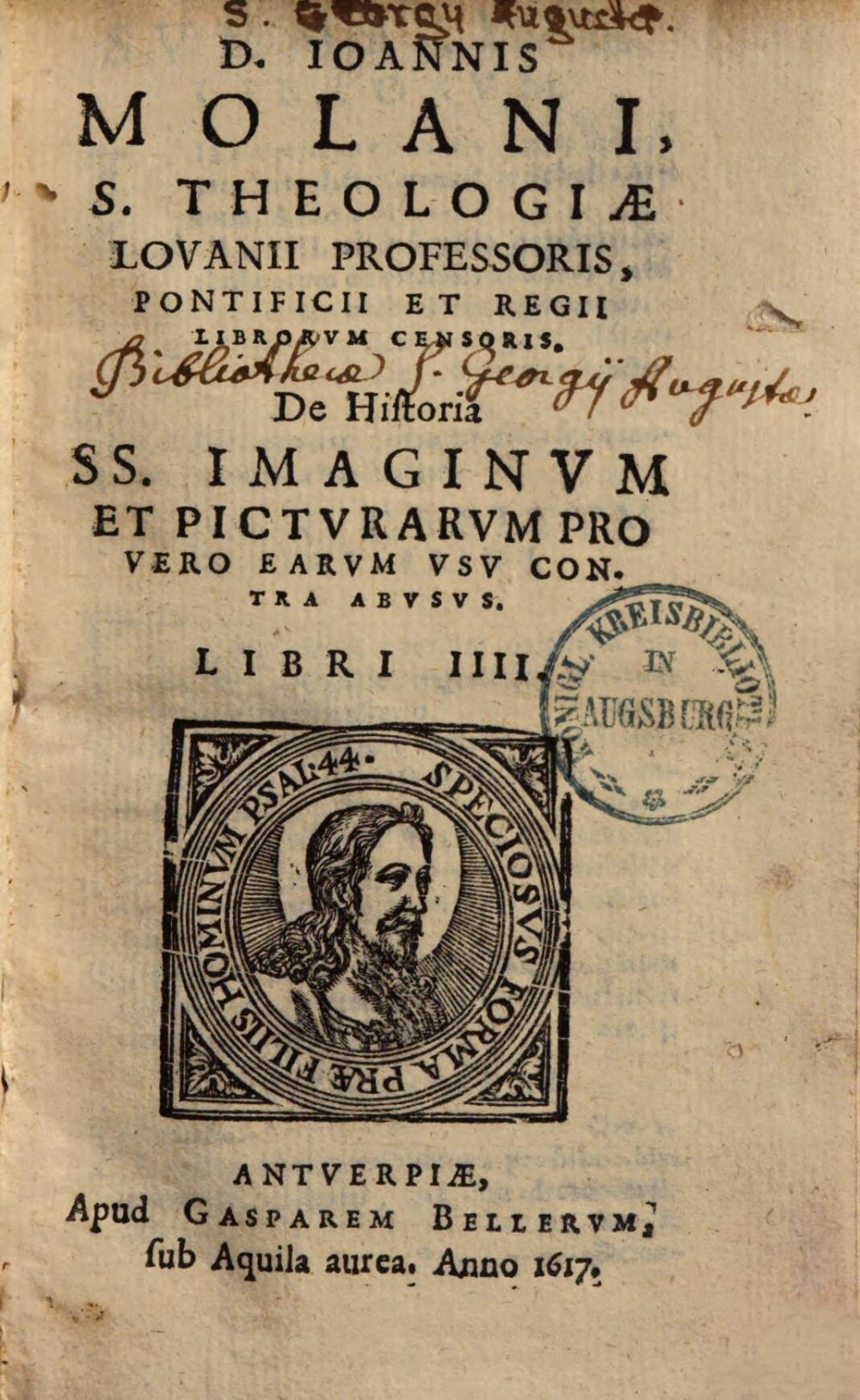
Augsburg, Staats- und Stadtbibliothek — Th H 1475. Digital Reproduction: München, Bayerische Staatsbibliothek, 2015.
Molanus counters the critique by protestants on the use of images in the Catholic Church, affirming these are legitimate contrary to the medals of reformers they carry themselves.
“We must add the criticism, taken from the Blessed Chrysostom and made to those who wore an effigy of Alexander the Great on their hats: ‘But what of those who tie medals of Alexander of Macedonia around their heads and feet? Tell me, is this all we expect, that after the cross and death of Our Lord we should put our hope of salvation in the image of a pagan king? Do you ignore the great work of the Cross? Did it not destroy death, anenatize sin, empty hell and break the power of the devil? And is it not trustworthy when it comes to restoring the health of the body?’ What can we say against those who call us idolaters because of the legitimate use of images, when they themselves sometimes wear images of Luther, Menno Simons, Hean Laski and their ilk, or of Erasmus, or of their friend?
A passage from Trebellius Pollion will make it easier to understand what Chrysostom says about people who put their salvation in the image of the pagan king Alexander. ‘In the family of the Macrians’, Trebellius reports, ‘the men wore on their gold and silver objects, the women on the net of their headdress, their bracelets, their rings and all such ornaments, the effigy of Alexander the Great of Macedonia.’ ‘If I have given these details,’ he writes, ‘it is because it is said that people who wear the effigy of Alexander in gold or silver are helped by it in all their enterprises.'”
“Porro ex B. Chrystostomo adiicienda est eorum repraehensio qui Alexandri Magni effigiem ad pileum gerebant, quid vero, inquit, diceret aliquis de circumligantibus aurea Alexandri Macedonis numismata capiti vel pedibus? Dic mihi haeccine sunt expectationes nostrae, ut post crucem et mortem Dominicamm in gentilis Regis Imagine spem salutis ponamus? Ignoras quanta crux persicit? Mortem dissoluit, peccatum extinxit, orcum inanem reddidit, diaboli soluit potentiam: et ad corporis sanitatem praestandam non est fide digna? Totum orbem exsuscitavit et tu in ipsa non confidis? Haex Chrystostomus quid autem dicturus fuisset contra eos qui nos Idololatras dicunt ob Imaginum legitimum usum, cum ipsi habeant aliquando pensilem in pileo aut alibi, imaginem Lutheri, Mennones, Ioannis a Lasco, vel similis, aut Erasmi, aut denique amicae suae? Illud vero ut melius intelligas quod dicit quosdam in gentilis Regis Alexandri Imagine spem salutis ponere, scribit Trebellius Pollio, Macrianae familiae viros in auro et argento, mulieres in reticulis et dextrocheriis et in annulis et in omni ornamentorum genere Alexandrum Magnun Macedonem expressum habere. Quod idcirco posui, ait Trebellius, quia dicuntur ivvari in omni actu suo, qui Alexandrum vel auro gestant, vel argento.”
Molanus 1996, 293-294.



